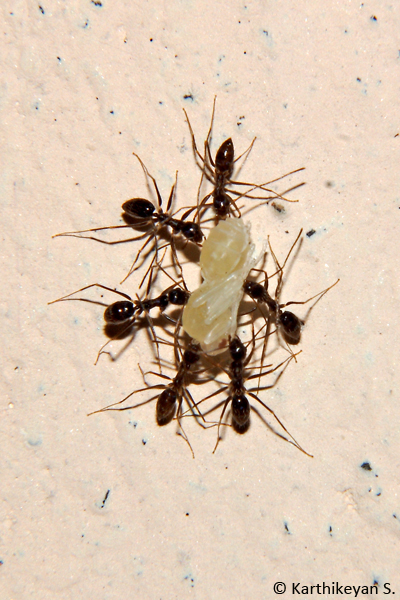Recently, I spent some time in my garden. Everything was damp owing to the heavy rains that came down over the previous two days. While looking around, I noticed an ant carry something in its mandibles. I got curious and sat observing and photographing what transpired over the next half hour. It was during this period that some thoughts went through my mind.
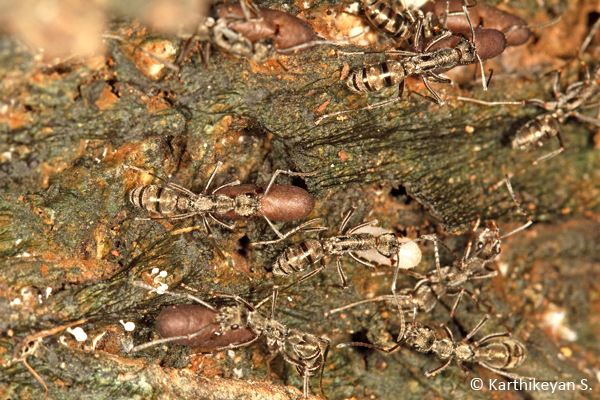 Ants moving eggs and pupae as part of the nest moving process.
Ants moving eggs and pupae as part of the nest moving process.
Moving residence is not always a very easy thing to do. It involves a lot of planning, particularly if the family is large. Plenty of considerations go in before a decision is made. Moving all the belongings can be an arduous task. There is a need for consensus from all the family members too – this perhaps is the most difficult part. Even within a small family, each member having varied needs and priorities influences the decision.
But if you are an ant, getting a thumbs up from all the members of the colony is perhaps easier. However, being an ant brings in other problems when shifting residence. It seems to be an indomitable task for a creature the size of an ant! In case of ants, moving would include everything from escorting the queen to the new nest to physically moving the eggs, larvae, and pupae. Of course, the workers and soldiers move in the process as well.
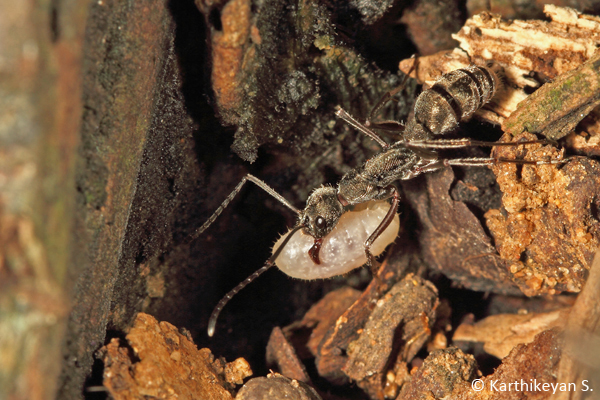 Greater Striated Bispinous Ant Diacamma ceylonense worker carrying a larva.
Greater Striated Bispinous Ant Diacamma ceylonense worker carrying a larva.
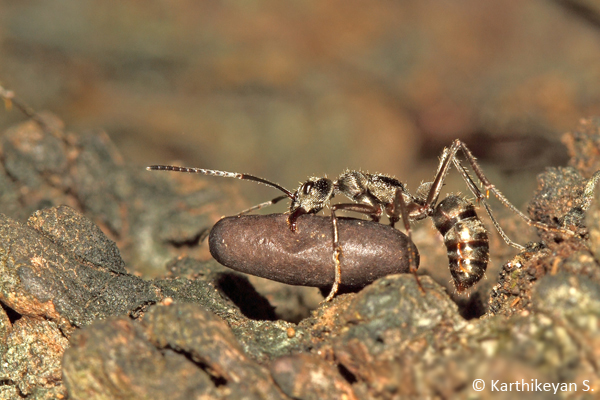 Greater Striated Bispinous Ant Diacamma ceylonense carrying a pupa.
Greater Striated Bispinous Ant Diacamma ceylonense carrying a pupa.
In general, the risk involved in exposing yourself is huge, particularly if you are prey to bigger organisms. This holds true in case of ants when they are moving residence. The eggs, larvae and pupae that cannot defend themselves against predators have to be brought out from the safety of their nest and taken to their new home. Yet, many a time ants decide to do so.
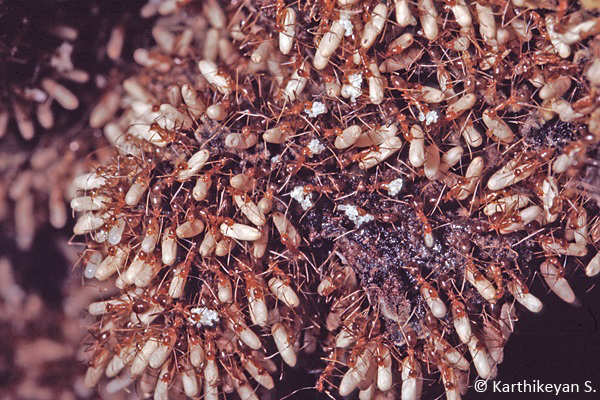 The Yellow Crazy Ant Anaplolepis gracilipes taking shelter from the rain under a log. Notice carefully and you will see individuals carrying eggs and pupae.
The Yellow Crazy Ant Anaplolepis gracilipes taking shelter from the rain under a log. Notice carefully and you will see individuals carrying eggs and pupae.
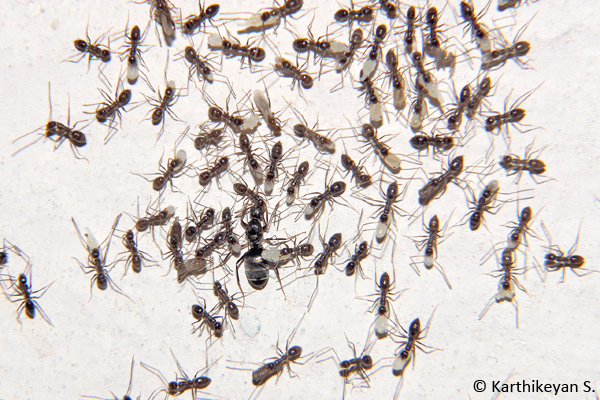 Black Crazy Ant Paratrechina longicornis queen being escorted by workers, some carrying eggs, while others larvae and pupae.
Black Crazy Ant Paratrechina longicornis queen being escorted by workers, some carrying eggs, while others larvae and pupae.
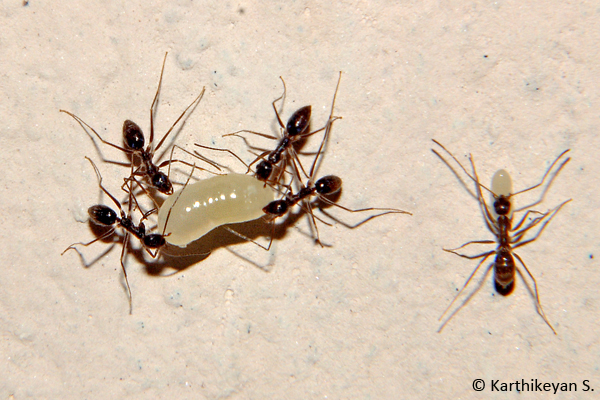 Team work – Four Black Crazy Ants Paratrechina longicornis carrying a larva.
Team work – Four Black Crazy Ants Paratrechina longicornis carrying a larva.
 The Pharaoh’s Ant Monomorium pharaonis queen being escorted by members of the colony.
The Pharaoh’s Ant Monomorium pharaonis queen being escorted by members of the colony.
But why? Why take so much risk? I was sure there was a good reason. A bit of fact finding led me to some interesting answers. The reasons for this movement, I learnt, could be very simple and straight forward. The old nest may have simply become unsuitable to continue in or perhaps there is just not enough space for the growing colony. It could even be that the nest has been flooded during the rains or has become too dry for comfort. Parasites, or for that matter fungal infestation could also be reasons for shifting residence. It could also be a situation where the colony has exhausted all the resources in the vicinity and is forced to shift to ensure that the colony survives. All of these could potentially threaten the very survival of the colony itself. So, a little risk is in order to ensure that the colony survives!
